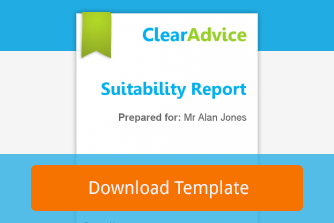
Rory Percival: What you should and shouldn’t be including in your suitability reports
Ed Evans
You’ve probably noticed of late that Rory Percival, FCA Technical Specialist, appears to have been on a one-man mission to dispel some of the myths that have grown up surrounding suitability reports, and provide some much needed guidance on what should and shouldn’t be included within them.
Given the perceived inconsistency between the views of the FCA and FOS I guess it’s hardly surprising that this has been met with a degree of scepticism by some within the industry. As Genovo is not at the “coalface” of advice, I don’t feel I’m in a position to pass comment on this aspect. However, I do strongly believe that any attempt to make suitability reports more reader-friendly and engaging can only be a good thing and should therefore be actively encouraged.
I am conscious there has already been a number of articles written about what Mr Percival has had to say on this matter. Two of the best I’ve read were written by Kim Bendall of The Paraplanners in Professional Adviser and Rob Kingsbury in Adviser Business Review. Therefore I don’t want to clutter the blogosphere with another regurgitation of Mr Percival’s presentation, but instead provide a brief recap of the points raised and highlight how Genovo deals with each of them.
According to Mr Percival there are only 3 things you need in a suitability report:
1. The client’s objectives
On a number of occasions he’s warned against the use of templated objectives, and stressed the need for personalised and client-based objectives in suitability reports. I wrote a blog on this back in February which you can read here.
2. Why the advice is suitable for the client
I think this is self explanatory but once again it does highlight the importance of including personalised and customer-specific reasons in your suitability reports. This is easily achieved within Genovo by adding custom advice reasons. Here’s an article from our Knowledge Base that explains how.
3. Any possible disadvantages and risks to the client
This is a mandatory element of COBS but Mr Percival suggested that this is frequently omitted from the suitability reports they see.
Within Genovo risk warnings specifically tailored to the advice you’re providing are automatically inserted into a dedicated Risk Warnings section within the main body of your report, and you’ll be prompted to confirm all disadvantages associated with your recommendations during the report building process.
From there he then went on to make some specific suggestions relating to format, layout and content.
Layout
He suggested using clearly defined headings and sub-headings, bullet points, tables and pictures wherever possible. This is an approach we’ve adopted within our reports since day one.
Avoid repetition
One of the biggest issues with templates and software generated reports has traditionally been repetition. Through clever design and the implementation of a complex rule mechanism we believe we have managed to overcome this within Genovo.
Don’t include information that’s irrelevant to the client
Genovo deliberately avoids bulky generic paragraphs, and employs an intelligent workflow with continuous prompts to add personalised text thereby ensuring all content is relevant to the client.
Client Agreement
If the initial disclosure document is agreed with the client, then there is no need to mention this is in the suitability report. Although Genovo does include reference to the client agreement within its standard wording this can easily be removed by editing the Title & Opening snippet in the Introduction section using the Report Content Manager. Here’s a link to an article from our Knowledge Base that explains how to customise a snippet.
Client Circumstances
You don’t need to repeat everything from the fact find and you certainly don’t need to tell the client everything they already know like their age and what they do for a living – which makes a lot of sense.
The client summary table in the Introduction Section of Genovo is “intelligent” which means only those fields containing data will be included within your report. If however, you’d prefer to remove this table and the surrounding wording in its entirety from your reports this is easily achieved by hiding the Client Background snippet in the Introduction section.
Attitude to Risk and Capacity for Loss
This does need to be in the suitability report. Within Genovo, you are prompted within the Investment Strategy section to confirm each client’s attitude to risk for each of their objectives (remember it is very possible the client will have different risk profiles for different objectives).
Investment Strategy
Again this does need to be confirmed in the report. However, only a summary is required. For example, you don’t need to include reams of information about your investment philosophy (create a separate glossy for this), and when recommending a model portfolio you don’t need to include details of all the underlying funds, instead add an advice reason “signposting” the client to the portfolio fact sheet – this is an approach we’ve advocated since day one.
Fund Platform Recommended
This again must be included in the report. For your convenience, Genovo comes preloaded with all of the main platform providers and prompts you to confirm the reasons why the platform’s been recommended, the related charges, as well as any possible disadvantages.
Alternative Products
Mr Percival suggested there is no need to include this section in your reports. However, in a previous blog, which you can read here, I questioned whether in reality this is quite so black and white as he suggests.
Product Charges
Although this isn’t strictly required, this is still considered good practice. Within Genovo you are are prompted to confirm all of the charges associated with a plan. They are then displayed within the report in a tabular format which is much easier for the client to understand. And remember if a particular charge isn’t relevant leave that field blank and it wont be included in your report.
Cost Comparison for Replacement Business
I’m not sure why he singled out cost comparison as it is my understanding that there are various aspects that need to be compared when undertaking replacement business, including performance and death benefits. However, for the reason outlined in this blog, when using Genovo you will be automatically prompted to compare the reduction-in-yield of the existing and the new plan whenever a replacement business recommendation is being made.
Reference to documents such as KFDs and KIIDs etc
Again although isn’t strictly speaking required it is considered good practice to include this information in your reports. When using Genovo, you are prompted to include a summary of all the documents you have provided to client to support the advice in your report within the Supporting Information step of the Important Information section.
Risk Profiles of recommended funds / portfolio / DFM etc
This is essential and you are prompted for this information every time you add an investment to an investment strategy within Genovo.
Taxation of Investments
You must highlight any tax implications associated with your recommendations e.g. a CGT or income tax charge. This is covered off within the Disadvantages step of the review sections in Genovo.
Although Mr Percival suggested that you don’t strictly need to cover off the tax side of the recommended investment(s) within your reports as this can be found in the KFD, I would suggest that KFDs rarely distinguish between whether the investment is being made on behalf of a private, trustee or corporate client. Hence why within Genovo a brief overview of the taxation of any recommended investment is automatically inserted within the Product Information section within the appendix of the report to specifically reflect the type of client the report has been written for.
Risk Warnings
Although this is a mandatory inclusion, Mr Percival warned against including pages of generic risk warnings that weren’t relevant to the client. I have in the past seen reports where the risk warnings run to 5 pages! Genovo uses a complex system of rules to ensure that only those risk warnings relevant to the recommendations being made are included within a report.
I would also take this opportunity to highlight that a risk warning is different to a disadvantage. Both are equally important, but they are very different. Check out this blog I wrote a little while ago for further information on this very subject matter.
Importance of reviews and their costs
This isn’t mandatory. However, if circumstances dictate it should be highlighted. Within Genovo this can be quickly and easily covered off within the Service & Reviews step of the Important Information section.
Limited or full advice disclosure and the specific cost of advice
Although this isn’t mandatory (assuming it’s in your initial disclosure documents) we can actually see benefits of re-confirming this information in your report e.g. where the specific cost of advice hasn’t previously been confirmed in writing to the client. Within Genovo the limited / full advice disclosure consists of a one line sentence that is automatically included within the report depending on the option selected in the Basis of Advice step in the Introduction section, and you are prompted to confirm the cost of the advice in the Adviser Remuneration step of the Important Information section.
In summary, I would suggest the idea that there are only three things you need in a suitability report is somewhat overly simplistic, but I really do appreciate the sentiment. I also think, given the length of the typical suitability report checklist, that the idea of a two page suitability report (for anything more than a basic investment or pension top-up at least) is possibly still a little fanciful, but thankfully for advisers and clients alike it does seem that the 50 page bottom-covering suitability report is well and truly a thing of the past….queue fanfare!
Learn how to make your suitability reports more reader-friendly and engaging. Click here to download our free suitability report template containing helpful tips.

It is important to keep in mind that this article relates only to FCA requirements. It does not tell you how to write a suitability letter that will stand up to scrutiny by FOS or FSCS in the event of a claim..
Hi Mike,
Thanks for your comment. This is a good point well made and one that I alluded to in my blog. To be fair to Rory Percival he has on many occasions openly asked the industry to come forward with examples of differences between the FCA and FOS views on suitability reports…As with most things I believe there is a half way house. Unquestionably suitability reports shouldn’t and don’t need to be 50 pages of generic guff, but you might just be taking your life and your PI cover in your own hands if you take everything out just so you cram it on to the back of a postage stamp!
Rory’s over simplification is clearly designed to grab headlines and, in fact, COBS 9.4.7 does state “at least” those elements. The speech also neatly ignored the requirement to mention items included in at least three other sections of COBS (9.4.10, 19.1.8 and 19.2.2 spring to mind) but that wouldn’t have made such a compelling headline and his speech would have resembled something out of the Life of Brian “What have the Romans ever done for us?” sketch.